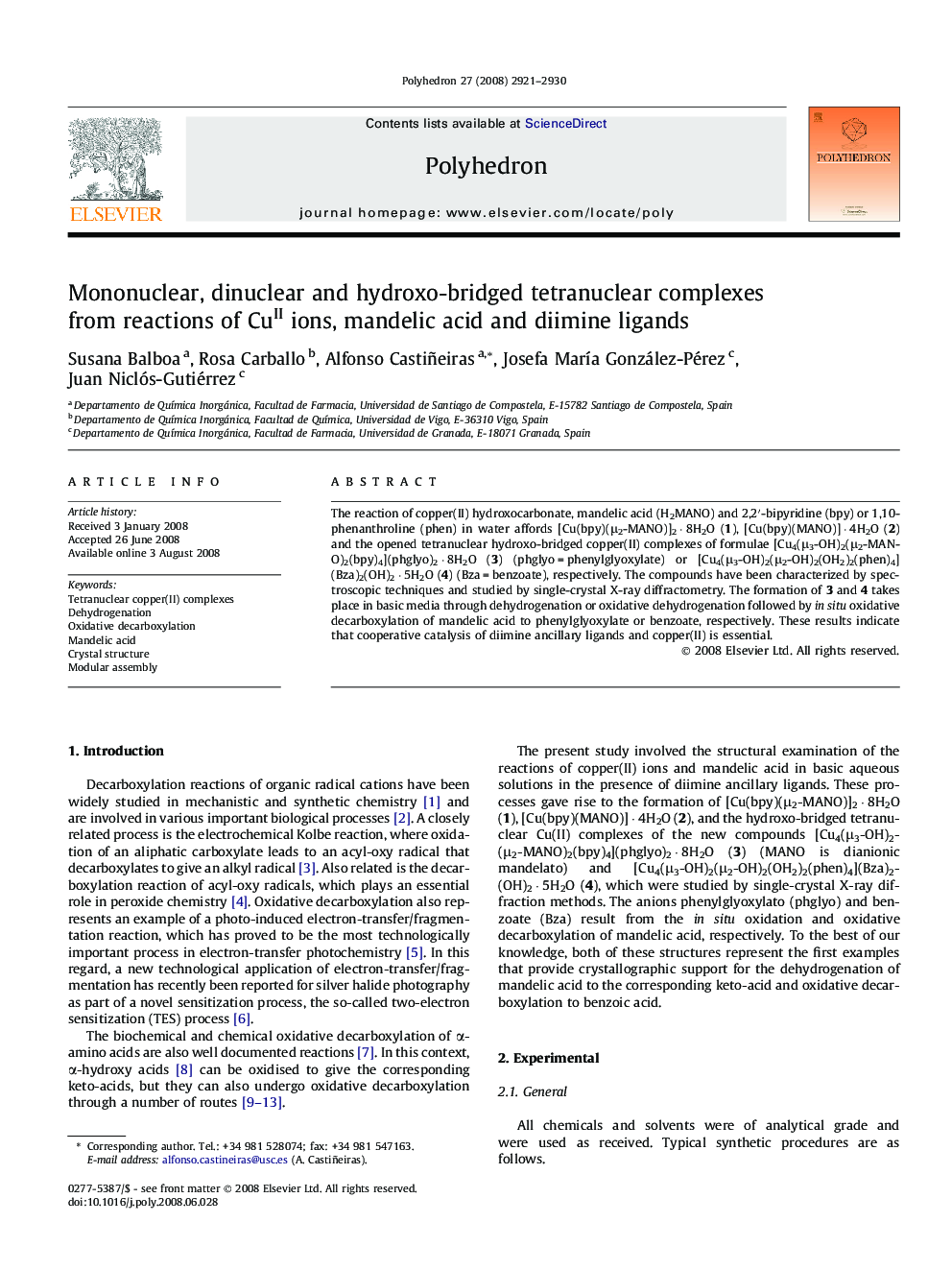| Article ID | Journal | Published Year | Pages | File Type |
|---|---|---|---|---|
| 1340358 | Polyhedron | 2008 | 10 Pages |
The reaction of copper(II) hydroxocarbonate, mandelic acid (H2MANO) and 2,2′-bipyridine (bpy) or 1,10-phenanthroline (phen) in water affords [Cu(bpy)(μ2-MANO)]2 · 8H2O (1), [Cu(bpy)(MANO)] · 4H2O (2) and the opened tetranuclear hydroxo-bridged copper(II) complexes of formulae [Cu4(μ3-OH)2(μ2-MANO)2(bpy)4](phglyo)2 · 8H2O (3) (phglyo = phenylglyoxylate) or [Cu4(μ3-OH)2(μ2-OH)2(OH2)2(phen)4](Bza)2(OH)2 · 5H2O (4) (Bza = benzoate), respectively. The compounds have been characterized by spectroscopic techniques and studied by single-crystal X-ray diffractometry. The formation of 3 and 4 takes place in basic media through dehydrogenation or oxidative dehydrogenation followed by in situ oxidative decarboxylation of mandelic acid to phenylglyoxylate or benzoate, respectively. These results indicate that cooperative catalysis of diimine ancillary ligands and copper(II) is essential.
Graphical abstractFour novel coordination compounds [Cu(bpy)(μ2-MANO)]2 · 8H2O (1), [Cu(bpy)(MANO)] · 4H2O (2), [Cu4(μ3-OH)2(μ2-MANO)2(bpy)4](phglyo)2 · 8H2O (3) and [Cu4(μ3-OH)2(μ2-OH)2(OH2)2(phen)4](Bza)2(OH)2 · 5H2O (4) have been synthesized from diimine ligands, mandelic acid and CuII ions. In 3 and 4, phenylglyoxylate or benzoate, respectively, are obtained by dehydrogenation or oxidative dehydrogenation followed by oxidative decarboxylation of mandelic acid.Figure optionsDownload full-size imageDownload as PowerPoint slide
